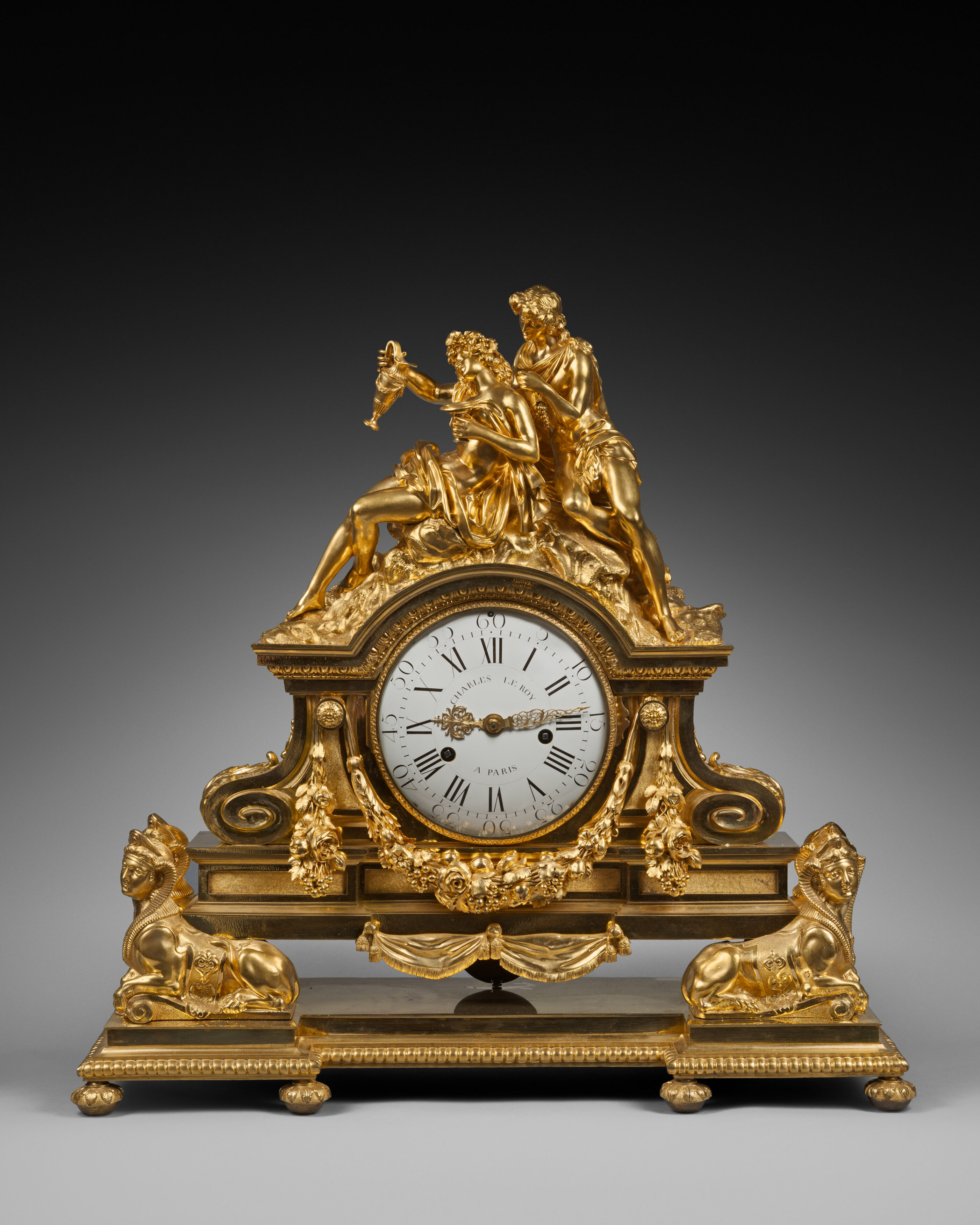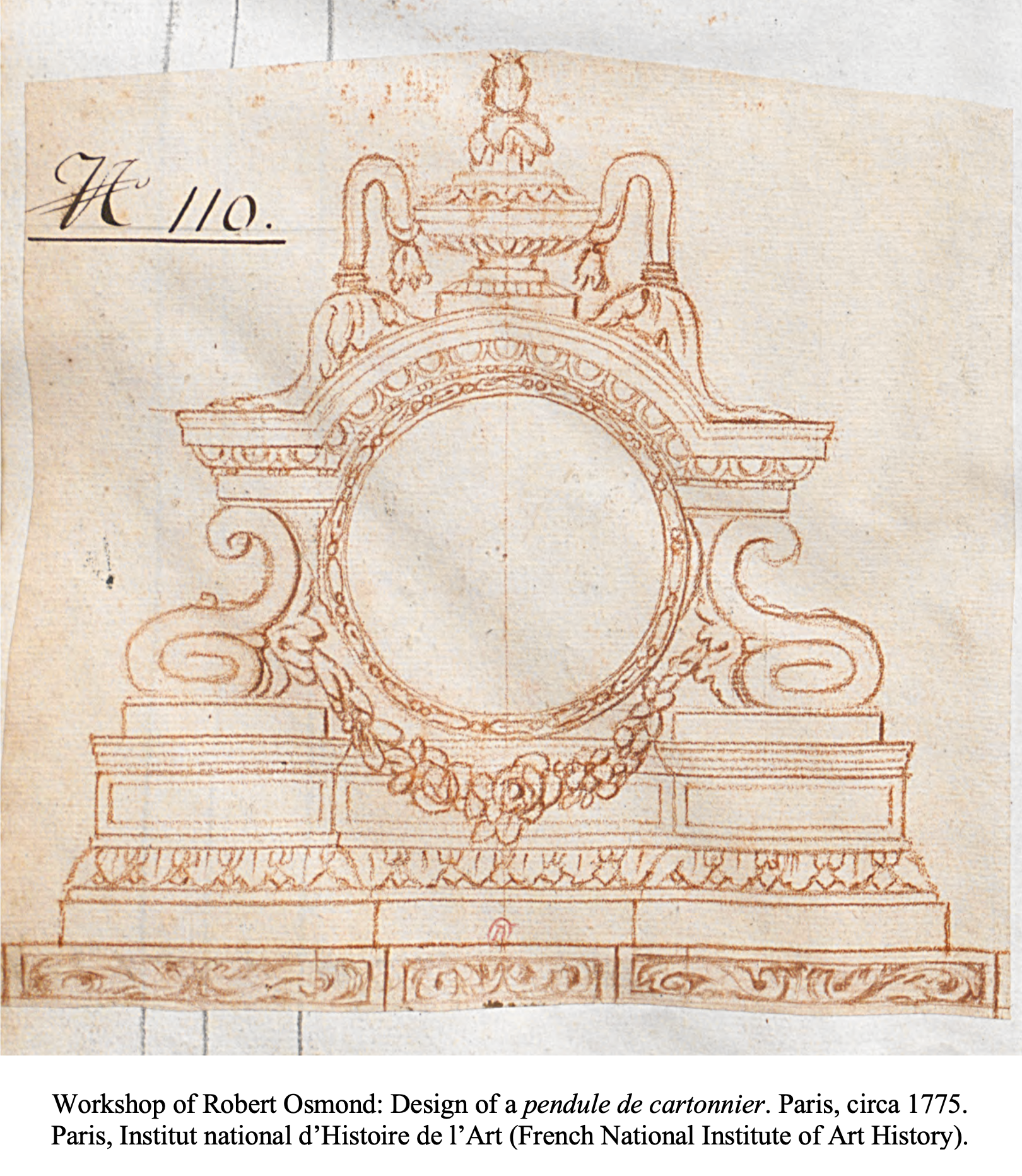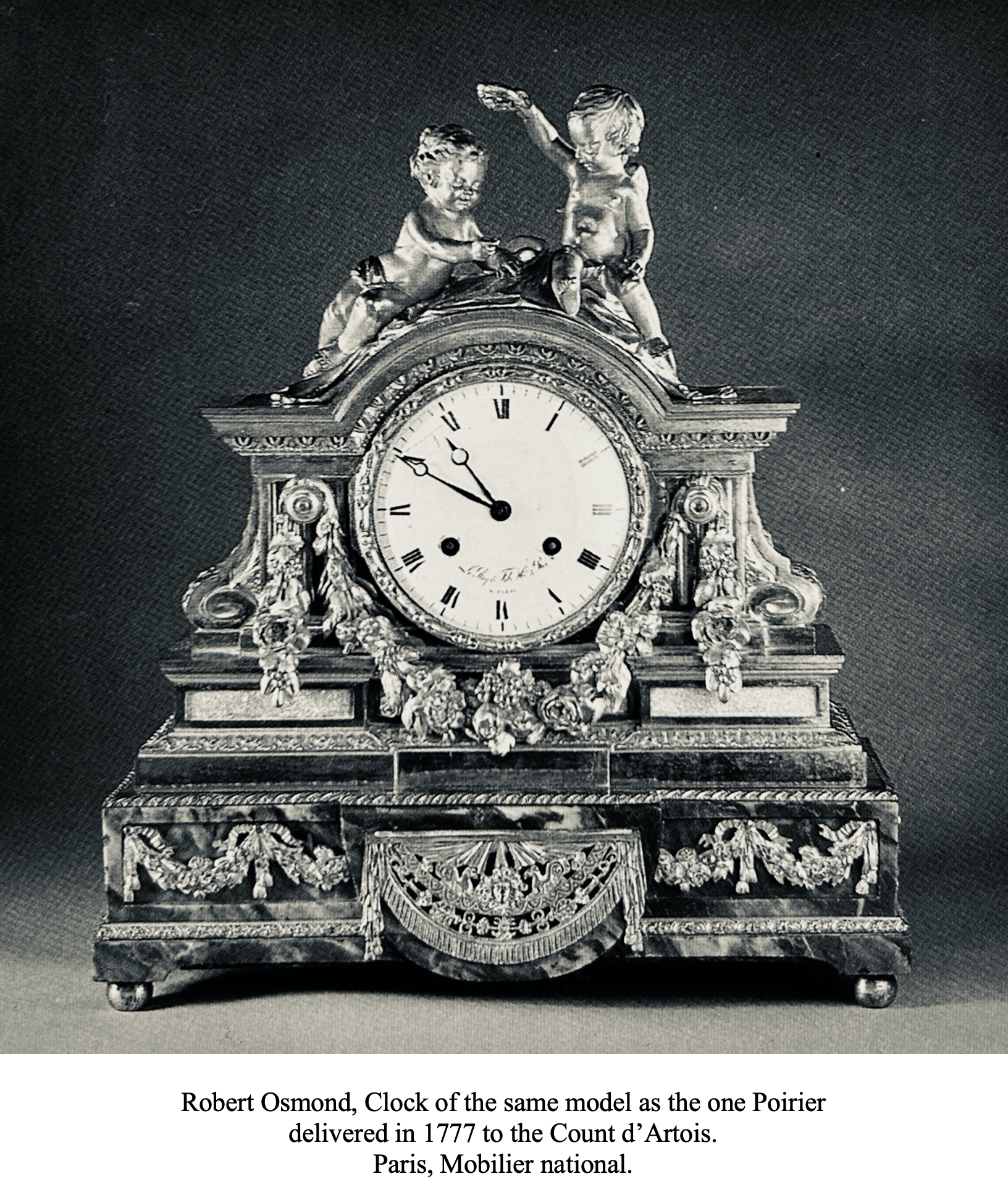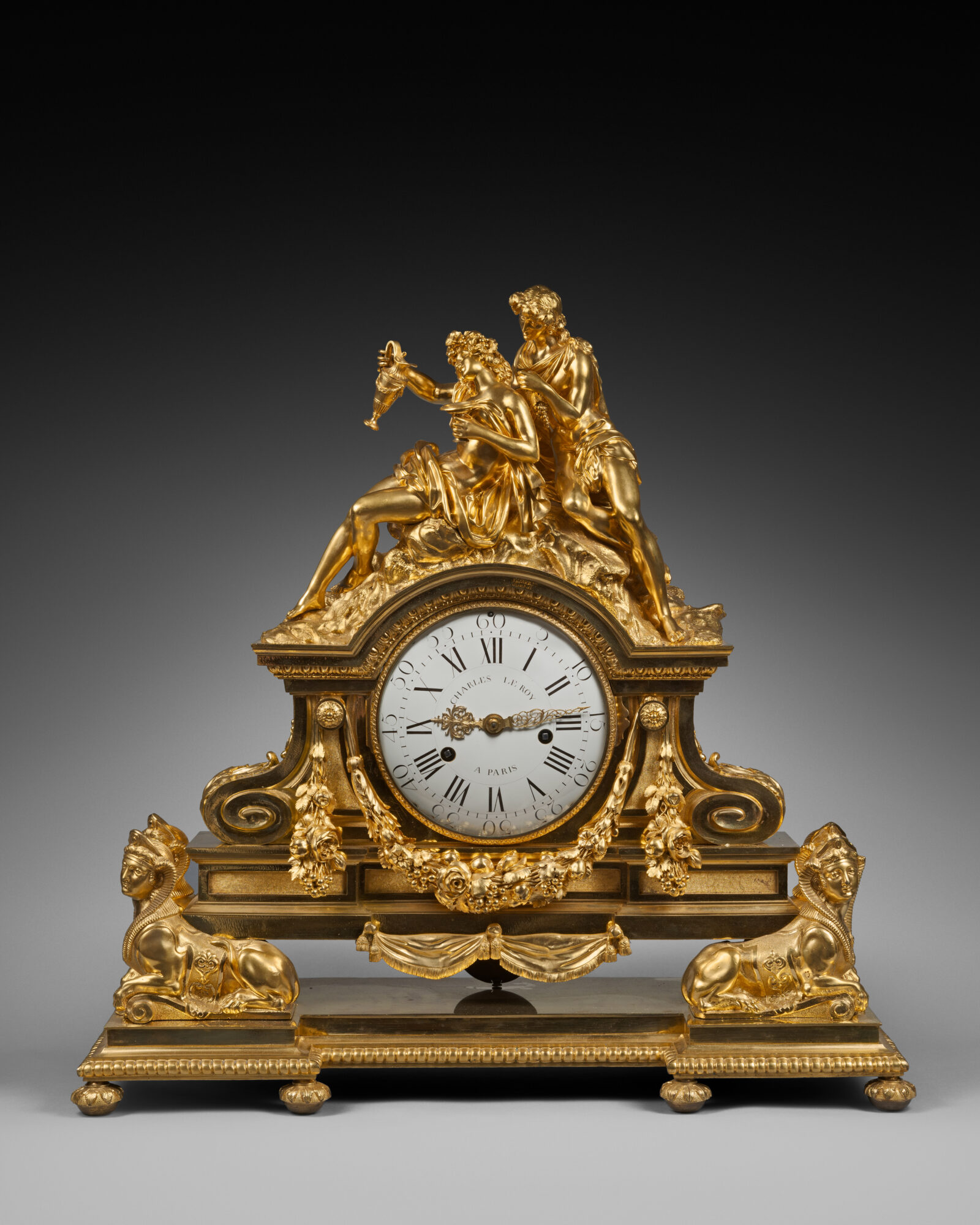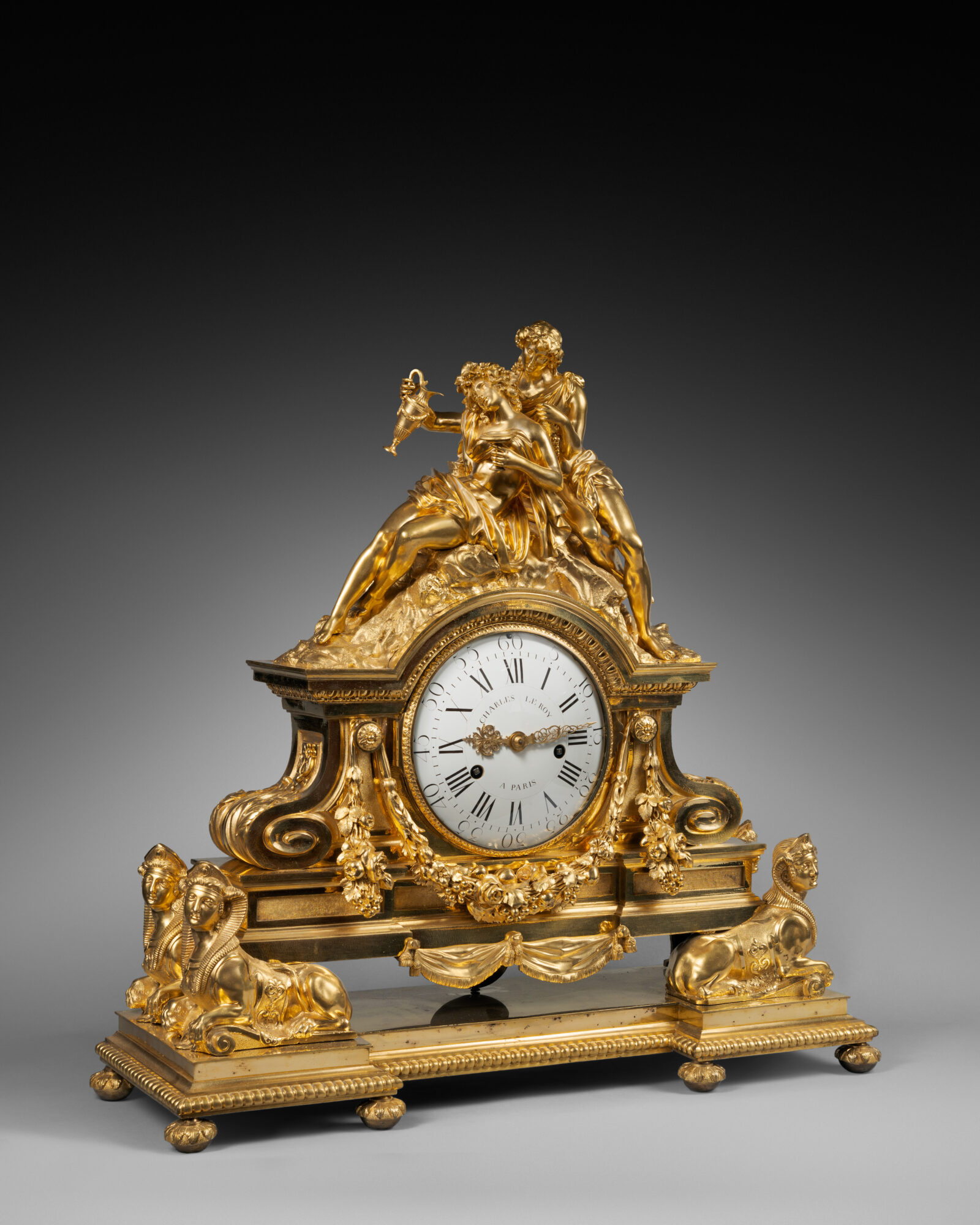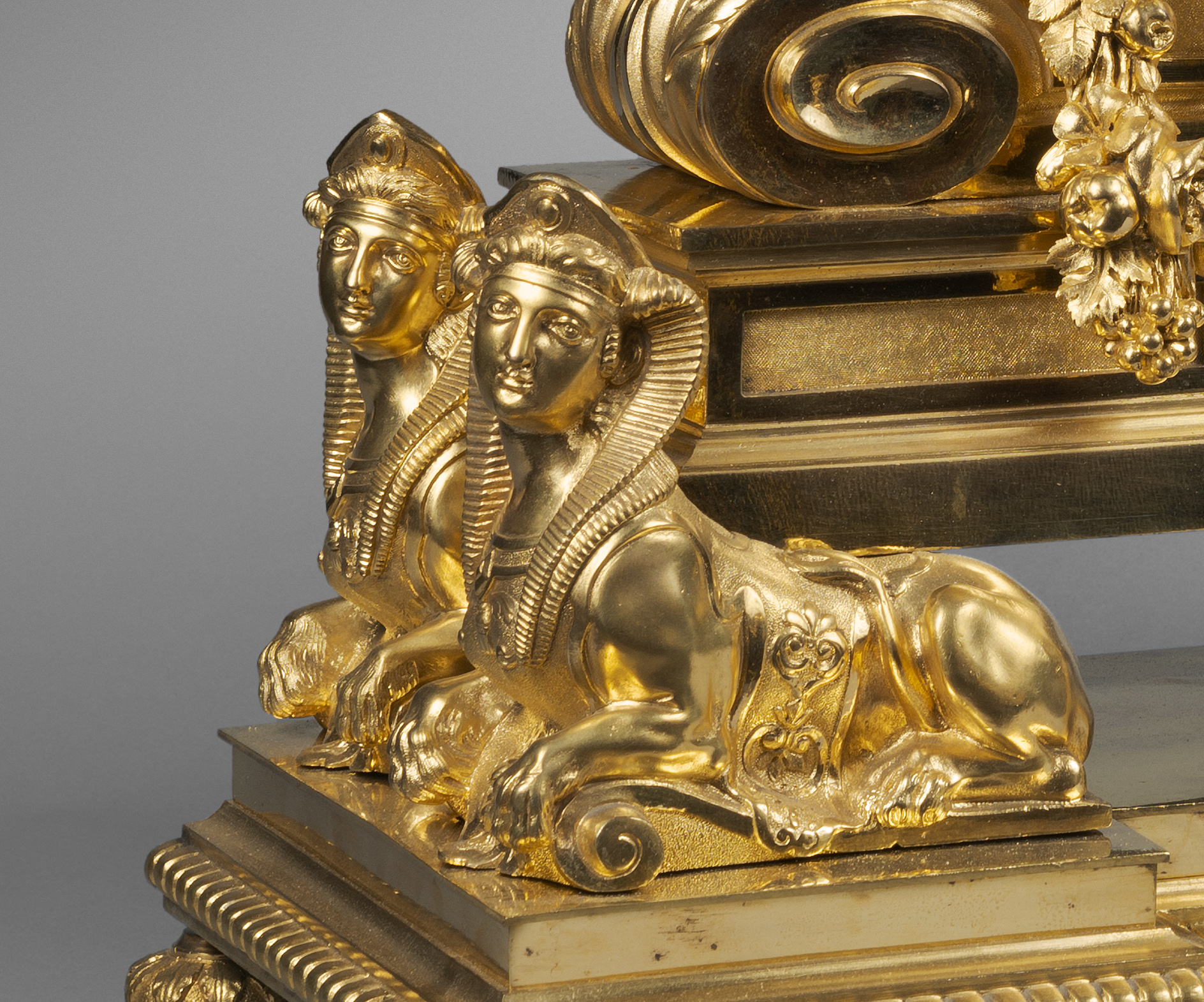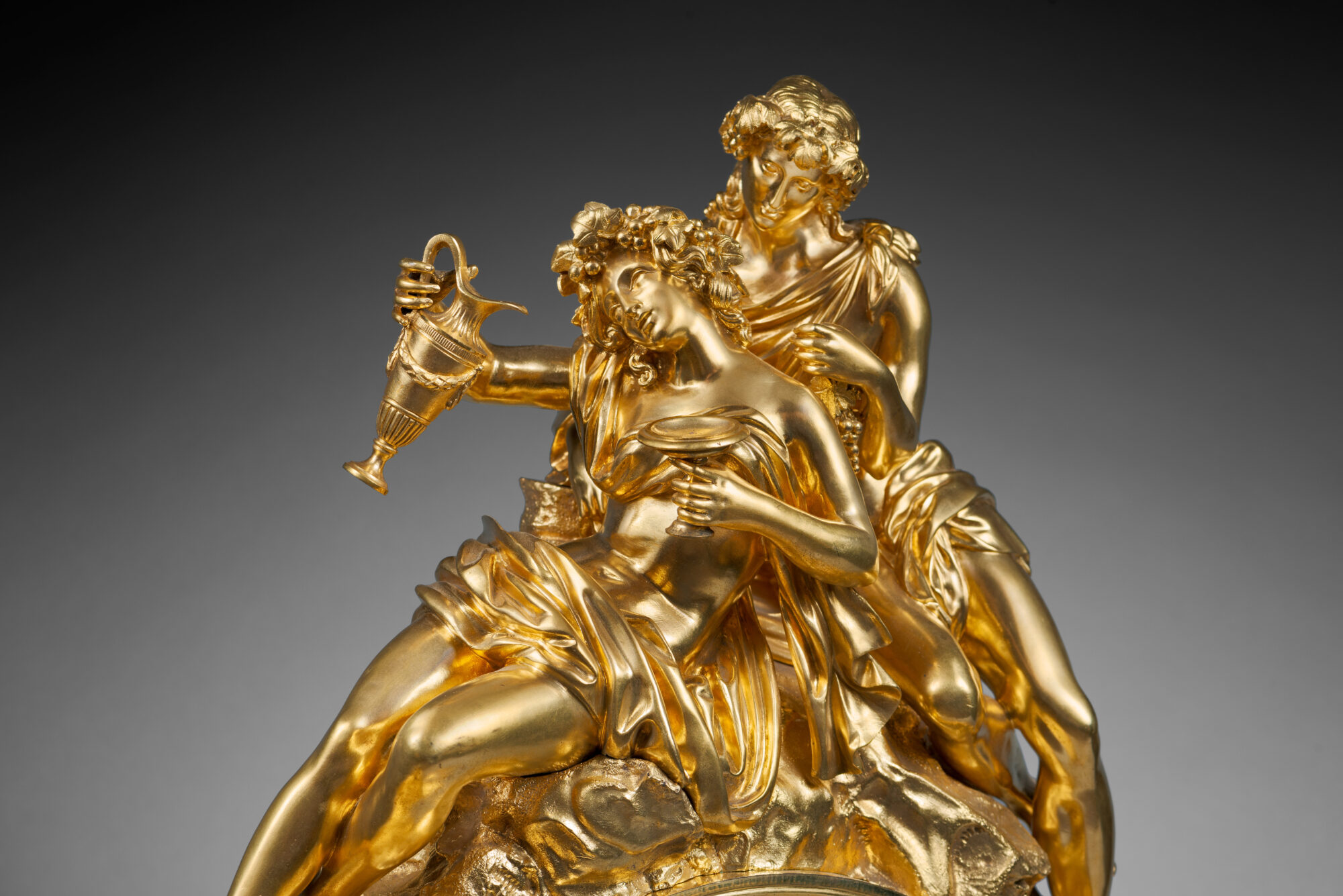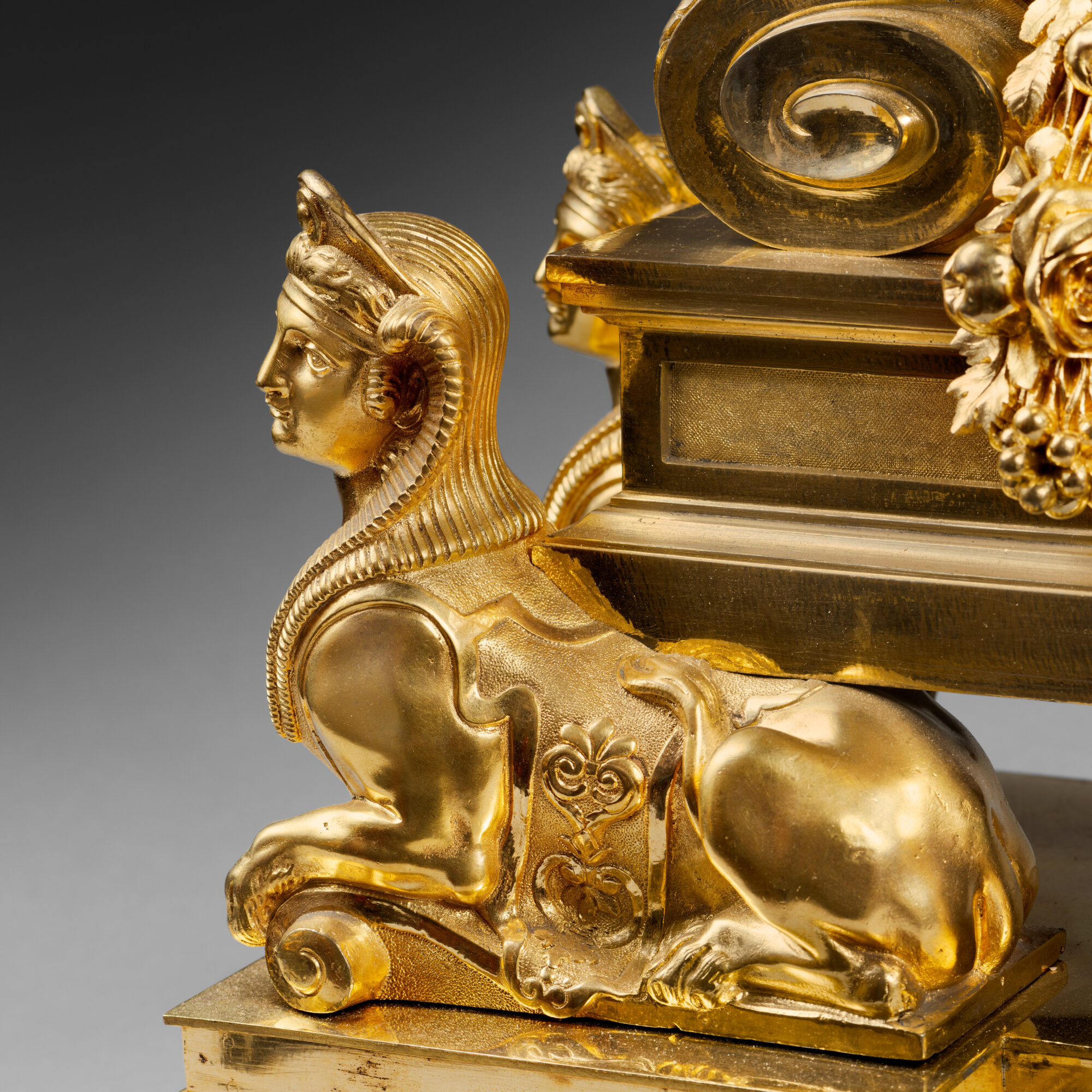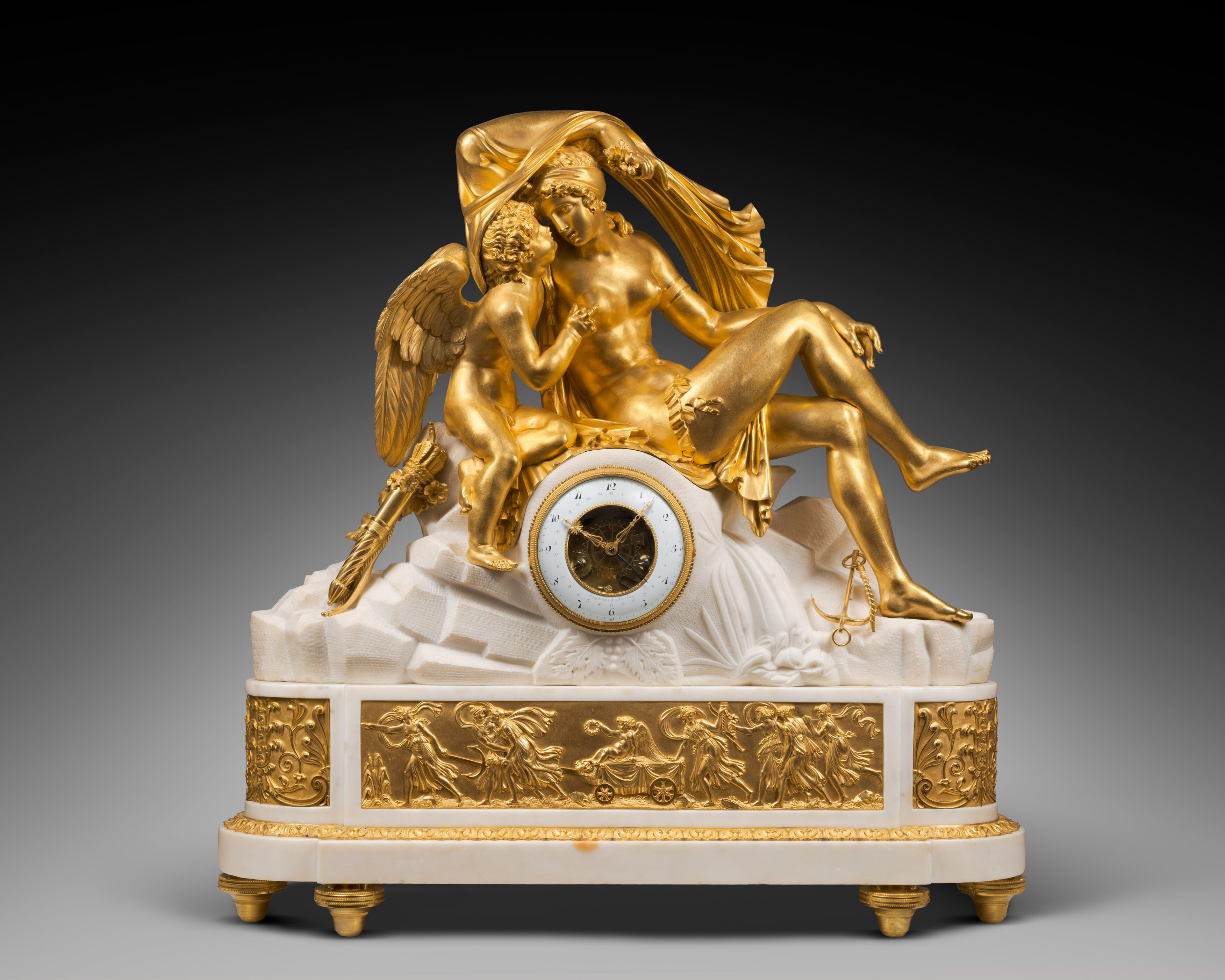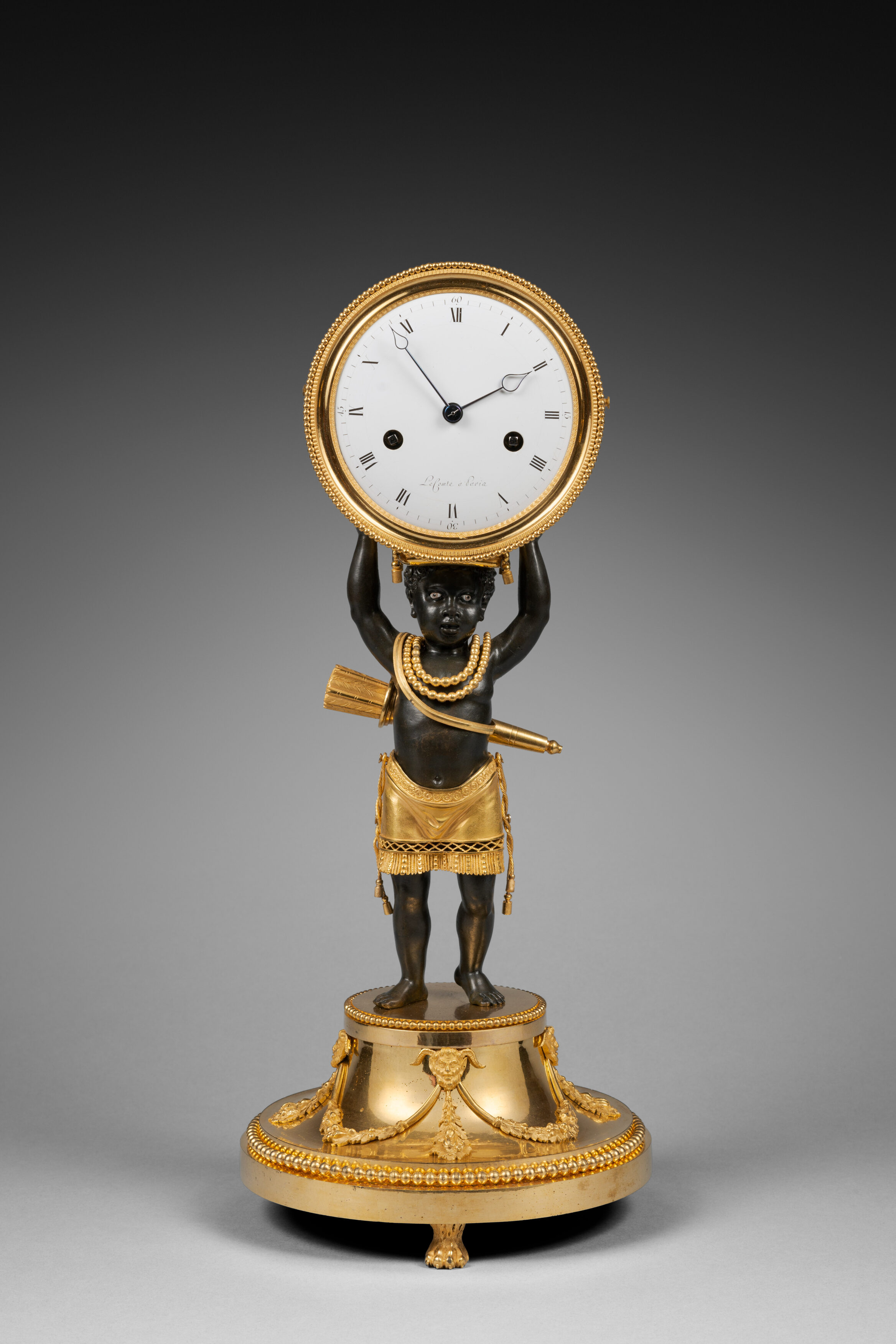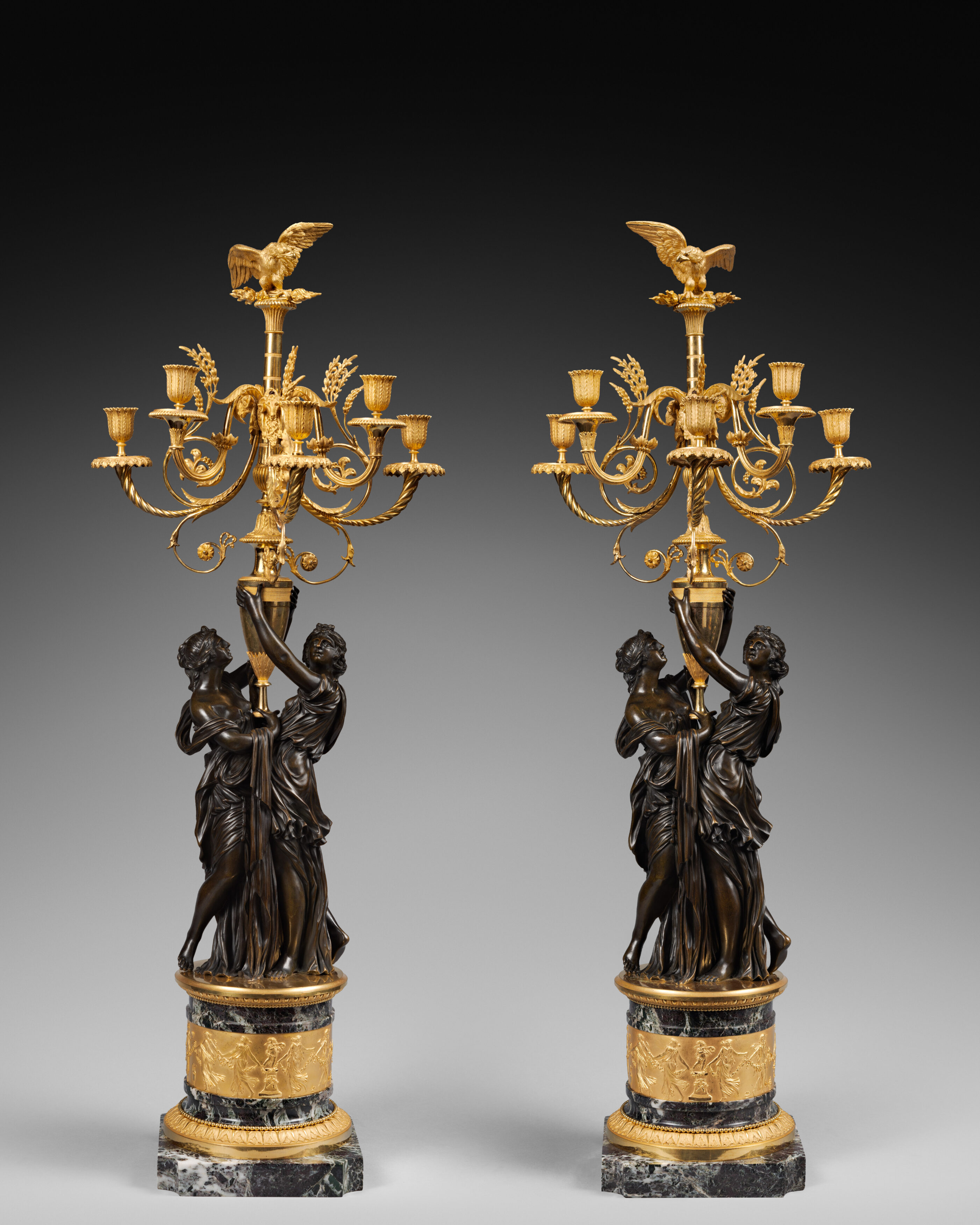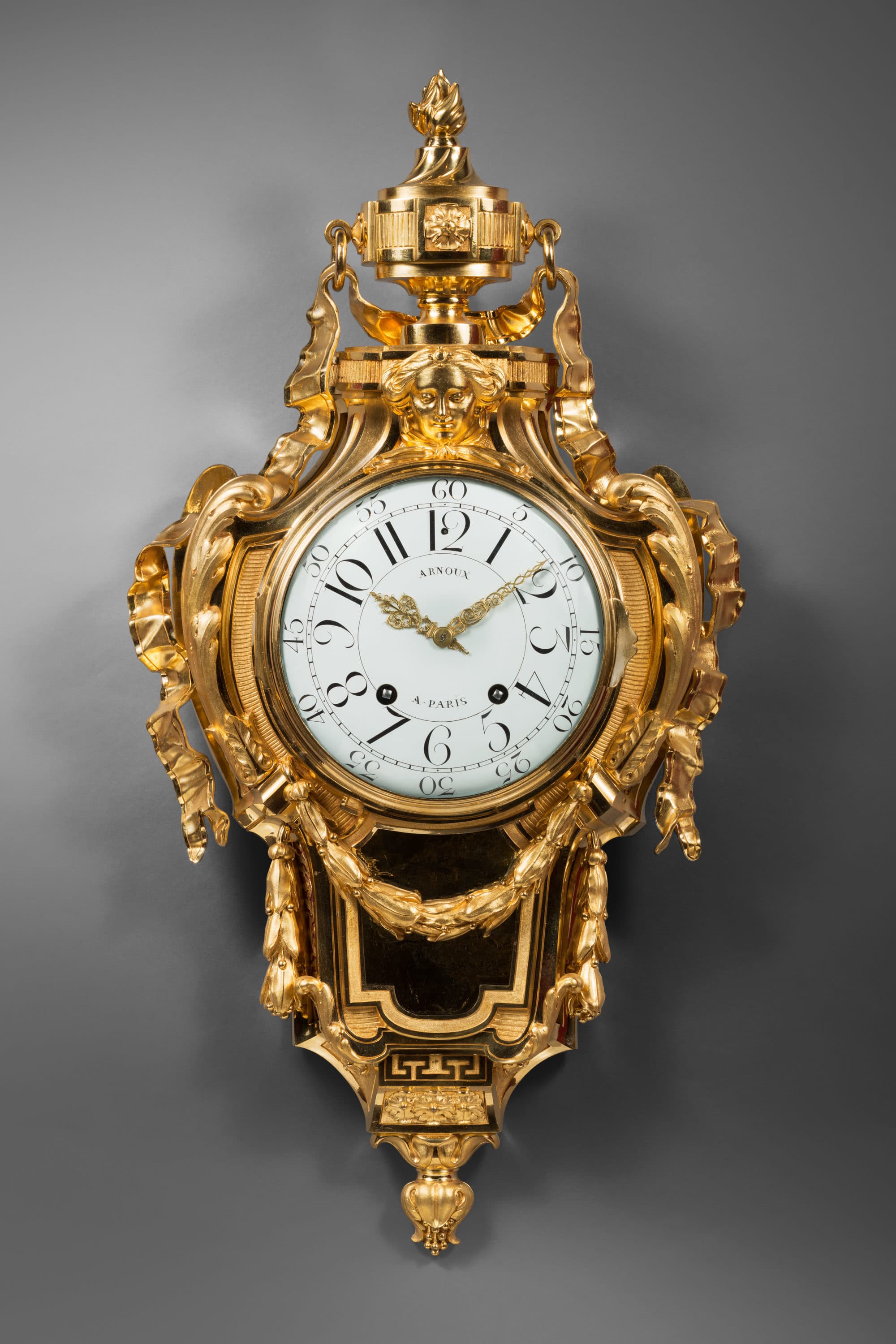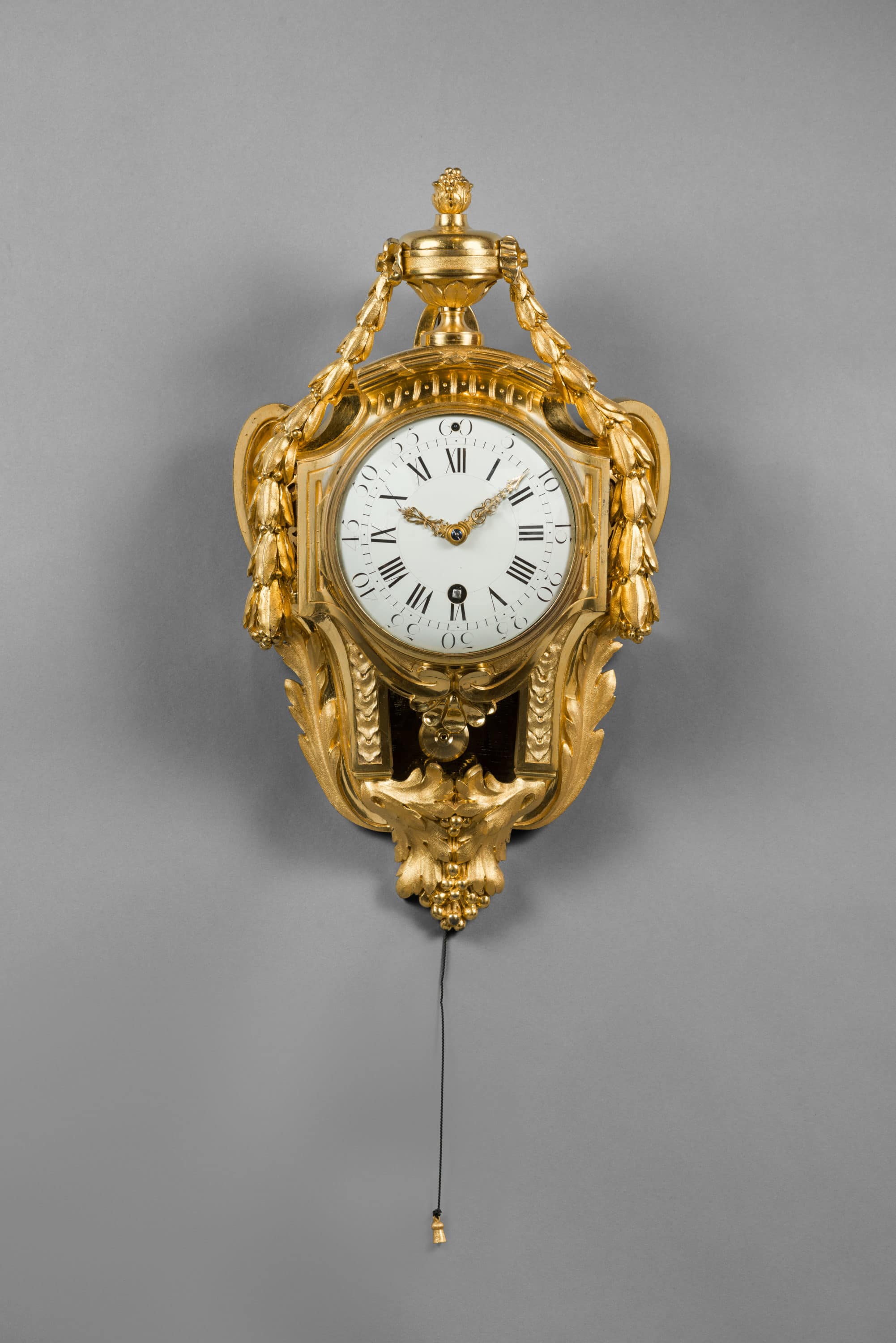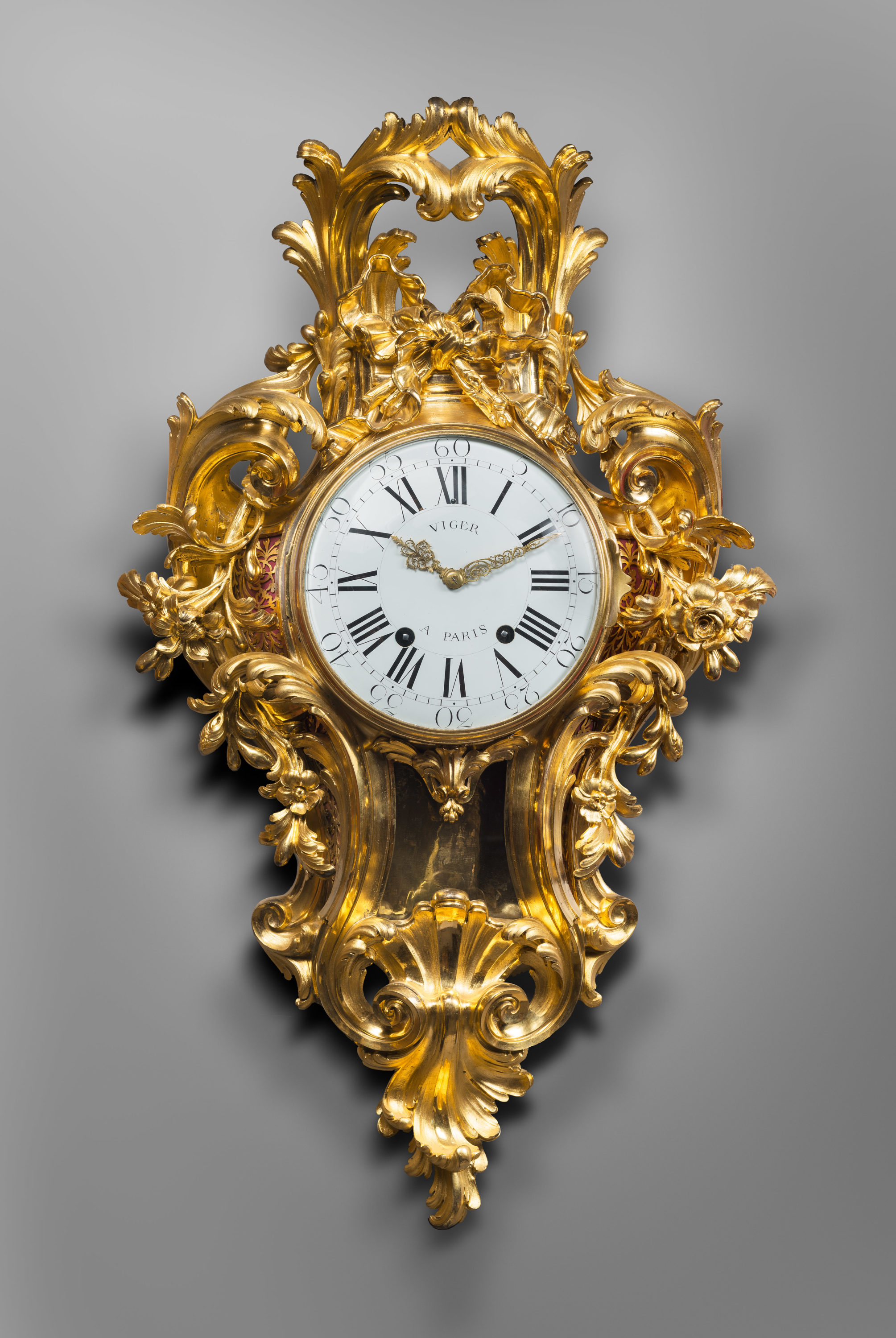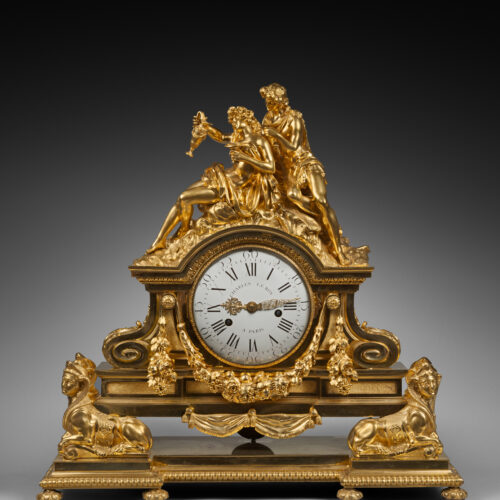Important Gilt Bronze Pendule de cartonnier with Matte and Burnished Finishing
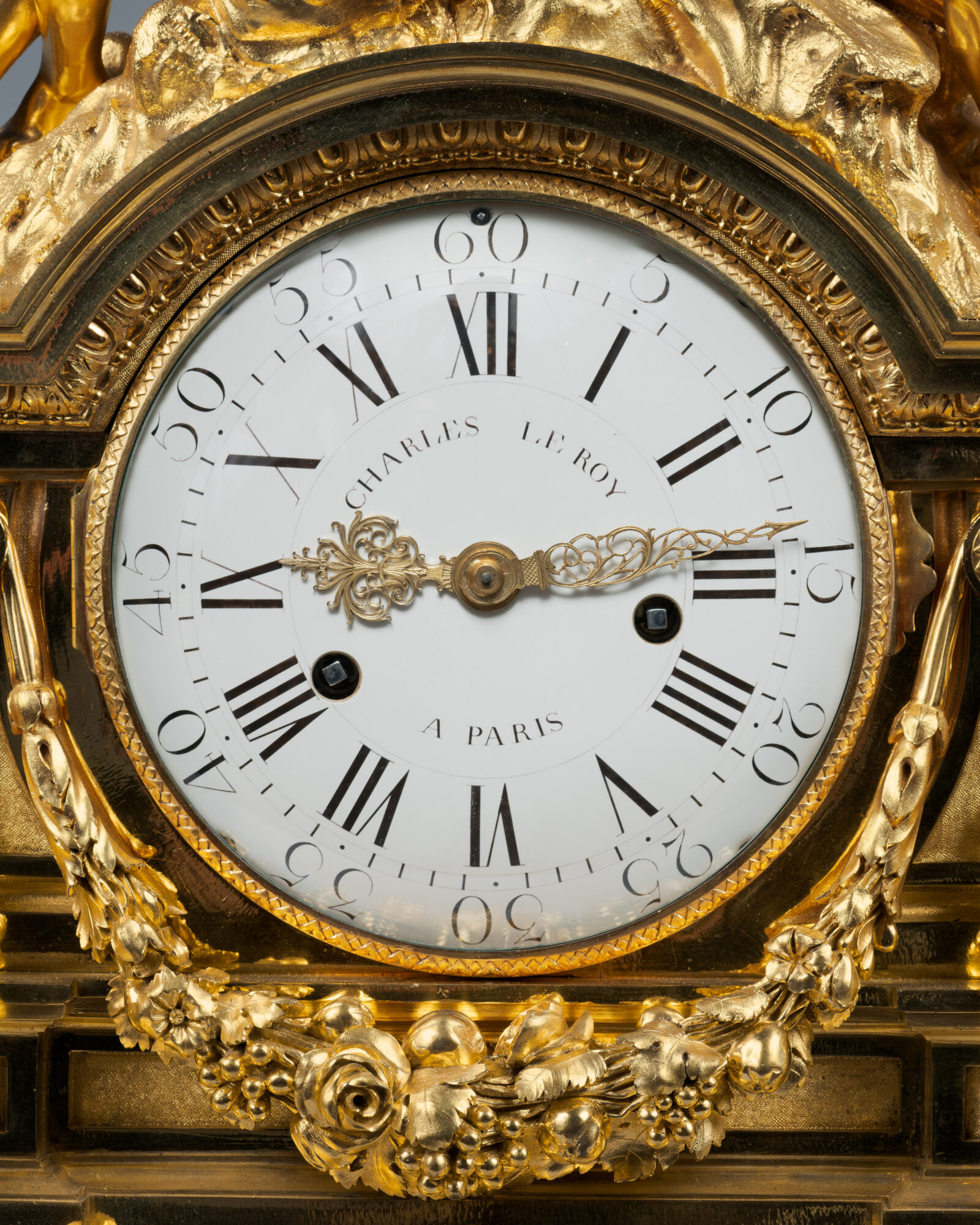
Dial Signed “Charles Leroy à Paris” for Parisian Clockmaker Charles Leroy
Case Signed “Osmond” for Parisian Bronze Caster Robert Osmond
Paris, early Louis XVI period, circa 1775, and circa 1800
The plate signed “Ch. Leroy à Paris”
The bronze stamped: “Osmond”
The round white enamel dial, signed “Charles Leroy à Paris”, indicates the Roman numeral hours and the Arabic numeral five-minute intervals by means of two pierced gilt bronze hands. The hour and half-hour striking movement is also signed “Ch. Leroy à Paris”; it is housed in a bronze neoclassical case that is finely chased and gilt, with matte and burnished finishing. The left hand side of the terrace bears the signature “Osmond”. The arch of the cornice is adorned with egg-and-dart friezes and round and oval bead friezes. It is surmounted by a mythological group depicting Bacchus and Ariadne, who is wearing a grape-leaf headdress. The young woman is holding a ewer from which she is about to pour wine into a cup she holds in her left hand. The architectural case is adorned with lateral scrolls that are decorated with acanthus leaves; on the façade, a flower and leaf garland is suspended from roundels adorned with rosettes; beneath it is a fringed drapery that is tied with tassels; the rectangular panels have matted reserves. The clock is supported by four reclining female sphinxes that are wearing nemes headdresses and are lying on a terrace adorned with scrolls. The shaped rectangular plinth is decorated with a stylized frieze. The clock is raised on feet adorned with stylized leaves.
Discover our entire collection of antique mantel clocks for sale online or at the gallery.
La Pendulerie is the specialist in fine and rare antique clocks, based in Paris.
The present clock, which stands out due to its exceptional proportions, was designed during the late 18th century by a Parisian bronze caster such as Denière or Feuchère, who clearly must have taken advantage of the Revolutionary sales to purchase a popular model that Osmond offered during the mid-1770s, modernizing it by adding, at the top, a sculptural group and at the base female sphinxes, thus creating a spectacular clock in a style that was sure to please the influential Parisian connoisseurs of the last years of the 18th century and the early years of the following century. The architectural design of the main case is entirely in the style of the neoclassical renewal that was in fashion the Paris during the late 1760s – the new style was a direct reaction to the rocaille decorative schemes of the early years of Louis XVI’s reign. The design was inspired by a sketch from the workshop of Robert Osmond that is included in an album featuring clocks that is now in the Institut d’Histoire de l’Art in Paris; it is illustrated in H. Ottomeyer and P. Pröschel, Vergoldete Bronzen, Munich, 1986, p. 228, fig. 4.1.7. Osmond produced several variations of the model. One example, which features neither the surmounting sculptural group nor the garland, is shown in Tardy, La pendule française, 2ème Partie: Du Louis XVI à nos jours, Paris, 1974, p. 301. A second example, now in the Mobilier national in Paris, is the model Poirier delivered to the Count d’Artois in 1777; it is surmounted by the figures of two children (see the exhibition catalogue La folie d’Artois à Bagatelle, 1988, p. 108, fig. 18).
Robert Osmond (1711 - 1789)
French bronze-caster Robert Osmond was born in Canisy, near Saint-Lô; he began his apprenticeship in the workshop of Louis Regnard, maître fondeur en terre et en sable, and became a master bronzier in Paris in 1746. He is recorded as working in the rue des Canettes in the St. Sulpice parish, moving to the rue de Mâcon in 1761. Robert Osmond became a juré, thus gaining a certain degree of protection of his creative rights. In 1753, he sent for his nephew in Normandy, and in 1761, the workshop, which by that time had grown considerably, moved to the rue de Macon. The nephew, Jean-Baptiste Osmond (1742-after 1790) became a master in 1764 and as of that date worked closely with his uncle, to such a degree that it is difficult to differentiate between the contributions of each. Robert appears to have retired around 1775. Jean-Baptiste, who remained in charge of the workshop after the retirement of his uncle, encountered difficulties and went bankrupt in 1784. Robert Osmond died in 1789.
Prolific bronze casters and chasers, the Osmonds worked with equal success in both the Louis XV and the Neo-classical styles. Prized by connoisseurs of the period, their work was distributed by clockmakers and marchands-merciers. Although they made all types of furnishing objects, including fire dogs, wall lights and inkstands, the only extant works by them are clocks, including one depicting the Rape of Europe (Getty Museum, California) in the Louis XV style and two important Neo-classical forms, of which there are several examples, as well as a vase with lions’ heads (Musée Condé, Chantilly and the Cleveland Museum of Art) and a cartel-clock with chased ribbons (examples in the Stockholm Nationalmuseum; Paris, Nissim de Camondo Museum). A remarkable clock decorated with a globe, cupids and a Sèvres porcelain plaque (Paris, Louvre) is another of their notable works.
Specialising at first in the rocaille style, in the early 1760’s they turned to the new Neo-classical style and soon numbered among its greatest practitioners. They furnished cases to the best clockmakers of the period, such as Montjoye, for whom they made cases for cartonnier and column clocks, the column being one of the favourite motifs of the Osmond workshop.
Charles Le Roy (1709 - 1771)
“Charles Le Roy à Paris” was the signature of one of the most important Parisian clockmakers of the Louis XV period. After having become a master on August 16, 1733, he opened a workshop in the rue des Prêcheurs, moving in 1745 to the rue Saint-Denis, across from the Saint-Leu church. Within a few years he acquired an excellent reputation among the most influential Parisian collectors of the time for his remarkable clock and watch movements. Beginning in the 18th century, several of his clocks appear in inventories; one piece is mentioned in the 1771 inventory of the collection of François de Pérusse, vicomte des Cars. A second clock, with a vernis Martin decor, was described in 1773 in the probate inventory of the wife of Jean-Baptiste Halma de Belmont, Conseiller du Roi and Grand audiencier of France: “A clock with decorated wall bracket, with pagoda and dragon, gilt bronze case, motifs painted by Martin, the striking movement by Charles Leroy, 400 livres”. After his death in Nanterre in 1771, Charles’s son Etienne-Augustin continued to run the workshop, and was named Horloger du Roi.
Discover our entire collection of antique clocks on La Pendulerie Paris.
